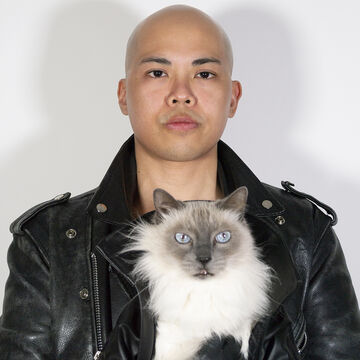| Queer Worldmaking |
Liberal Arts |
2098 (001) |
Fall 2024 |
|
Description
We live in a world we didn’t create. But we innovate how to exist within it. This Scholar’s blended academic/studio symposium course explores what it might mean to “queer” space through installation strategies. Installation art is the desire to transform the perception of space to produce new experiences. What could it look like and feel like to take up space while simultaneously making room with others and for others? Together, we will explore these questions through the lens of feminist and queer historical texts that archive radical experiments, aspirations, and failures in kinship, collectivity, and utopian world building efforts. Additional readings will look at affect theory, disorientation, desire, accessibility, and community-building. Students are expected to keep up with the reading weekly and to come to class ready to write about it and discuss it in depth. Studio work, solo and group, will explore and transform space through different techniques such as the arrangement of found/rescued objects, soundscape, light manipulation, video projection, smell, activation via performance, haptic textures, and other modes of site-specific strategies. Artists in focus will include Allyson Mitchell, Nayland Blake, Tiona Nekkia Mcclodden, Jacolby Satterwhite, Chris E. Vargas, Ernesto Pujol, Kang Seung Lee, AK Burns/Katherine Hubbard, and more.
|
Class Number
2051
Credits
3
|
| Queer Worldmaking |
Undergraduate Studies |
2098 (002) |
Fall 2024 |
|
Description
We live in a world we didn’t create. But we innovate how to exist within it. This Scholar’s blended academic/studio symposium course explores what it might mean to “queer” space through installation strategies. Installation art is the desire to transform the perception of space to produce new experiences. What could it look like and feel like to take up space while simultaneously making room with others and for others? Together, we will explore these questions through the lens of feminist and queer historical texts that archive radical experiments, aspirations, and failures in kinship, collectivity, and utopian world building efforts. Additional readings will look at affect theory, disorientation, desire, accessibility, and community-building. Students are expected to keep up with the reading weekly and to come to class ready to write about it and discuss it in depth. Studio work, solo and group, will explore and transform space through different techniques such as the arrangement of found/rescued objects, soundscape, light manipulation, video projection, smell, activation via performance, haptic textures, and other modes of site-specific strategies. Artists in focus will include Allyson Mitchell, Nayland Blake, Tiona Nekkia Mcclodden, Jacolby Satterwhite, Chris E. Vargas, Ernesto Pujol, Kang Seung Lee, AK Burns/Katherine Hubbard, and more.
|
Class Number
1662
Credits
3
|
| Permeable Membranes |
Fiber and Material Studies |
3016 (001) |
Spring 2024 |
|
Description
A membrane is a thin, typically planar structure or material that separates two environments, be those physical, molecular, or cultural. This class investigates this transitional space, and the potential for movement and transgression through it. Membrane structures are developed as surfaces, forms, and spatial relationships through techniques like chenille quilting, free motion sewing with a soluble membrane, nuno felting, papermaking in 2D and 3D, resist wax dyeing (batik), dip and wick dyeing, fabric burnout (devore) through silkscreening, protein/cellulose combination dyeing, and jacquard crocheting. Readings on conceptual permeability will include Jean Baudrillard?s ?Simulacra and Simulations?, Andrew Ballantyne?s ?Remaking the Self in Heterotopia?, Homi K. Bhabha?s ?On `hybridity? and `moving beyond??, and Roger Cardinal?s ?Secrecy?. Techniques will be divided into three major projects with written statements. This course also requires artist and reading presentations.
|
Class Number
1197
Credits
3
|
| Interdisciplinary Critique Seminar |
Masters in Fine Arts |
5011 (003) |
Spring 2024 |
|
Description
The purpose of this course is to provide an informal critique situation where students from various disciplines meet once a week to present and discuss their work. The faculty leader facilitates the discussion, which is designed to help students articulate a critique of their own work as well as the work of other students.
|
Class Number
1823
Credits
3
|
| Graduate Projects: Fiber and Material Studies |
Masters in Fine Arts |
6009 (018) |
Fall 2024 |
|
Description
Taken every semester, the Graduate Projects courses allow students to focus in private sessions on the development of their work. Students register for 6 hours of Graduate Project credit in each semester of study.
|
Class Number
1687
Credits
3
|

